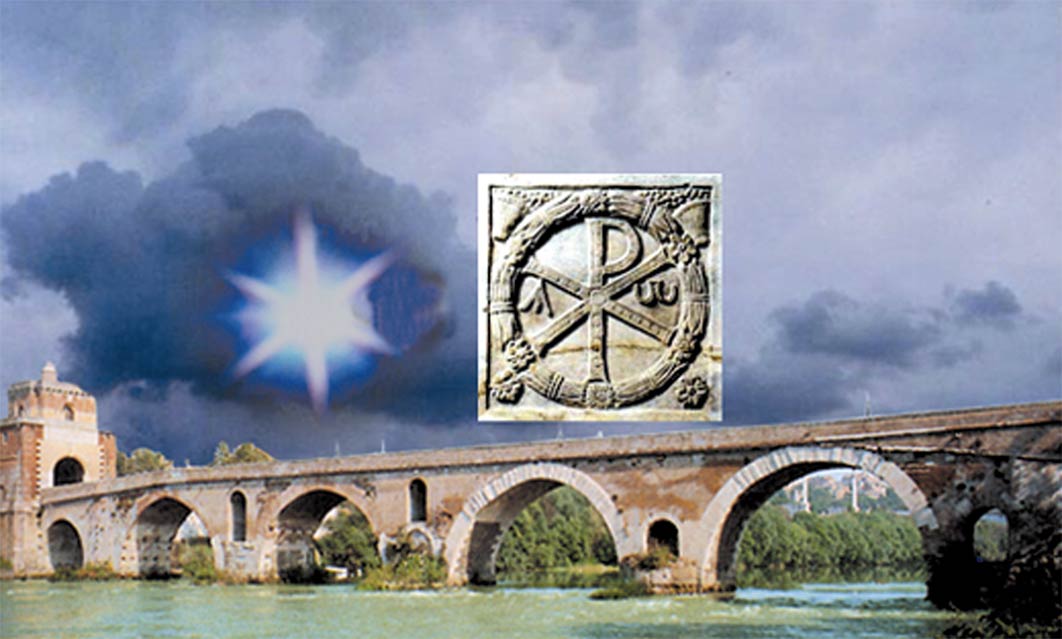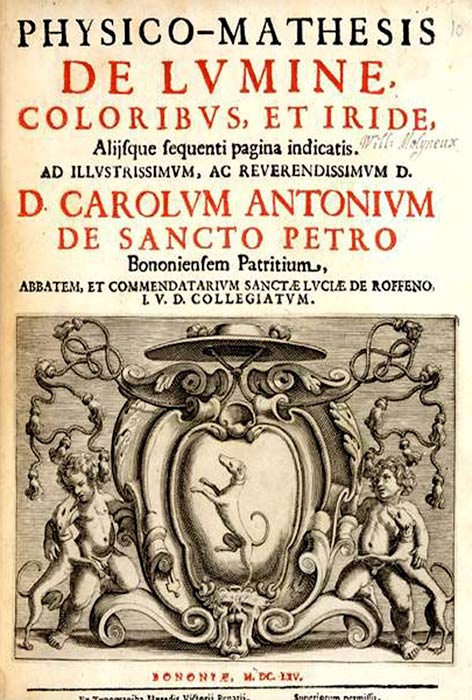
In Hoc Signo Vinces: In This Sign You Will Win
On the night of October 27, 312 AD at Saxa Rubra, Rome, Emperor Flavius Valerius Constantinus, (Constantine) son of Constantius I Chloros and Helena, was set to engage with the armies of Maxentius, a contender challenging the emperor for his coveted position. Night settled upon both armies about to face each other in battle the following day. During that night, according to historian Eusebius of Caesarea, Emperor Constantine dreamt of Christ, who told him to have the first Greek letters of his name engraved on all the soldiers' shields: Χριστός that is, Chi and Rho. The following day, a short distance from Ponte Milvio - the scene of the clash between the two armies - at noon, Constantine saw two intertwined Greek letters in the sky (transverse X littera I) and he heard a voice telling him: "In hoc signo vinces". In reality the expression was presumably pronounced in Greek - ἐν τούτῳ νίκα - however the meaning remains the same: "In this sign you will win!”

Constantine's Vision and the Battle of the Milvian Bridge in a ninth century Byzantine manuscript. Bibliothèque nationale de France. (Public Domain)
The Battle of Ponte Milvio
This extraordinary revelation was also witnessed by Lactantius the son of Constantine, who, in his De mortibus persecutorum published only two years after the event, wrote that: "Constantine was warned in a dream to have the celestial sign impressed on his shields before engaging in battle. He obeyed and had the shields marked with the name of Christ: an X crossed by the letter I curved towards the top. Armed with this emblem, the army took up the sword" and won, fulfilling the prophecy. Maxentius' 22,000 soldiers crossed the Tiber River on a shaky wooden bridge and faced Constantine's 17,000 men, trained veterans from various victorious military campaigns along the banks of the Rhine. Maxentius’ troops were soon dispersed and only the Praetorians managed to resist, heroically defending the Ponte Milvio bridge, their only possible escape route. However, the old wooden bridge collapsed under the immense weight of the troops, drowning most of the Praetorians. The sources narrate that even Maxentius tried to escape in the river, but the weight of his armor dragged him to the bottom, drowning miserably in an inglorious death.
"In this sign you will win!" Perhaps it was because of this prophesy, or perhaps it was because of the greatness of his army, but Constantine the Great actually defeated his rival Maxentius, entered Rome triumphantly, displaying the severed head of his rival, and the Senate recognized him as the legitimate heir to the imperial throne and awarded him the coveted title of Augustus.

Modern Ponte Milvio, Rome. (Deriv : Courtesy Dr Roberto Volterri)
A Vision Or Optical Diffraction?
The present author, exploring the Ponto Milvio landscape 17 centuries after the event, noted the close morphological analogy between the two Greek letters X (chi) and I (iota), (not X and P /rho) and the image that can materialize when a strong source of light, for example such as the one represented by the sun, shines through a crack in the sky between two close clouds. The diffraction effect of the light rays, in these conditions, can actually resemble a Chi-Rho or an image very similar to the two Greek letters intertwined, especially if between the source of light, the sun, and the eyes of the observer, forced to ajar due to the intense brightness, an obstacle is placed, such as that represented by the shiny metal tip of an imperial spear.
- Was the Emperor Constantine a True Christian or Was He a Secret Pagan?
- The Council of Nicaea: Pagan Emperor Constantine Used Christianity to Unify Church and State
- A Millennium of Glory: The Rise and Fall of the Byzantine Empire
Before exploring the complex historical events which brought Constantine to power and which affected the followers of Jesus Christ who, three centuries before, had in turn revolutionized the way of living and thinking of the whole of Palestine, one can propose a heretical hypothesis on the episode of the Ponte Milvio vision, which allowed Constantine to rise up as a paladin of Christianity, as a defender of the followers of the 'new' faith, to the point of transforming it into a State religion. One can hypothetically propose that Constantine saw something else in the sky. The religious Francesco Maria Grimaldi, in his work Physico mathesis de lumine, coloribus et iride, published in 1665, was the first to describe the strange behavior of light waves, while observing the complexity of the edge of the shadow of a small obstacle, projected onto a screen by a thin beam of sunlight penetrating from a small hole drilled in a wall.





